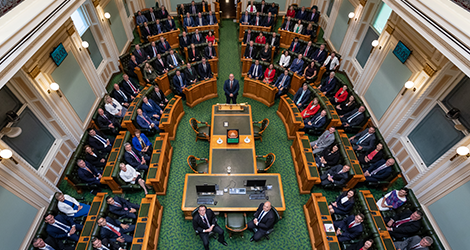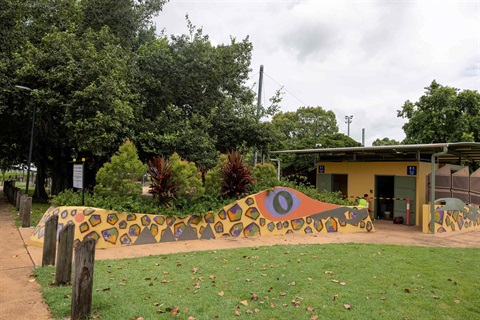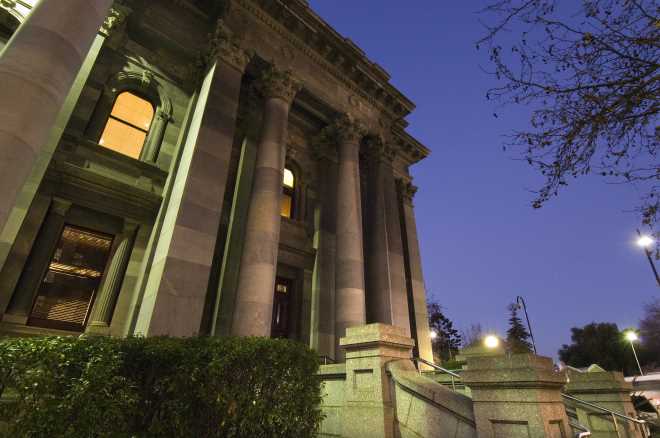President Joe Biden was inaugurated in January 2021 amid a devastating pandemic, with in the U.S. recorded at that point.
Author
- Arthur Daemmrich
Professor of Practice in the School for the Future of Innovation in Society, Arizona State University
, initiated by the Trump administration in May 2020, meant an effective vaccine was becoming available. Biden quickly announced a plan to immunize 100 million Americans over the next three months. By the end of April 2021, 145 million Americans – nearly half the population – had received one vaccine dose, and 103 million were considered . Science and technology policymakers celebrated this coordination across science, industry and government to address a real-world crisis as a .
From my perspective as a , Biden’s legacy includes structural, institutional and practical changes to how science is conducted. Building on approaches developed over the course of many years, the administration elevated the status of science in the government and fostered community participation in research.
Raising science’s profile in government
The U.S. has no single ministry of science and technology. Instead, agencies and offices across the executive branch carry out scientific research at several national labs and fund research by other institutions. By elevating the White House to a Cabinet-level organization in its history, Biden gave the agency greater influence in federal decision-making and coordination.
Formally established in 1976, the agency provides the president and senior staff with scientific and technical advice, bringing science to bear on executive policies. Biden’s inclusion of the agency’s director in his Cabinet was a strong signal about the elevated role science and technology would play in the administration’s solutions to major societal challenges.
Under Biden, the Office of Science and Technology Policy established guidelines that agencies across the government would follow as they implemented major legislation. This included developing technologies that to address climate change, , and .
Instead of treating the ethical and societal dimensions of scientific and technological change as separate from research and development, the agency advocated for a more integrated approach. This was reflected in the appointment of social scientist as the agency’s first deputy director for science and society, and science policy expert as principal deputy director for policy. Ethical and societal considerations were added as for grants. And initiatives such as the and frameworks for further encouraged all federal agencies to consider the social effects of their research.
The Office of Science and Technology Policy also introduced new ways for agencies to consult with communities, including Native Nations, rural Americans and people of color, in order to avoid known biases in science and technology research. For example, the agency issued to recognize and include Indigenous knowledge in federal programs. Agencies such as the Department of Energy have incorporated while rolling out atmospheric carbon dioxide removal technologies and building new .
Use-inspired research
A of U.S. science funding is that it often fails to answer questions of societal importance. Members of Congress and policy analysts have argued that funded projects instead overly emphasize basic research in areas that advance the careers of researchers.
In response, the Biden administration established the at the ³Ô¹ÏÍøÕ¾ Science Foundation in March 2022.
The directorate uses social science approaches to help focus scientific research and technology on their potential uses and effects on society. For example, engineers developing future energy technologies could start by consulting with the community about local needs and opportunities, rather than pitching their preferred solution after years of laboratory work. Genetic researchers could share both with the communities that provided the researchers with data.
Fundamentally, “use-inspired” research aims to reconnect scientists and engineers with the people and communities their work ultimately affects, going beyond publication in a journal accessible only to academics.
The technology, innovation and partnerships directorate established initiatives to support and bringing together researchers, entrepreneurs and community organizations. These programs, such as the and , seek to balance the traditional process of grant proposals written and evaluated by academics with broader societal demand for affordable health and environmental solutions. This work is particularly key to parts of the country that have not yet seen visible gains from decades of federally sponsored research, such as regions encompassing western North Carolina, northern South Carolina, eastern Tennessee and southwest Virginia.
Community-based scientific research
The Biden administration also worked to involve communities in science not just as research consultants but also as .
Scientific research and technology-based innovation are often of experts from elite universities or national labs. Yet, many communities are eager to conduct research, and they have insights to contribute. There is a of citizen science initiatives, such as to national environmental surveys and community groups that officials can use to make regulations more cost effective.
Going further, the Biden administration carried out experiments to create research projects in a way that involved community members, local colleges and federal agencies as more equal partners.
For example, the asked people from across the country, including rural and small-town Americans, to identify local environmental justice issues and potential solutions.
The program funded community organizations to test and scale successful health interventions, such as identifying pregnant women with complex medical needs and connecting them to specialized care.
And the ³Ô¹ÏÍøÕ¾ Science Foundation’s required academic researchers to work with local organizations to address local concerns, improving the community’s technical skills and knowledge.
Frontiers of science and technology policy
Researchers often cite the 1945 report , written by former Office of Scientific Research and Development head Vannevar Bush, to describe the core rationales for using American taxpayer money to fund basic science. Under this model, funding science would lead to three key outcomes: a secure national defense, improved health, and economic prosperity. The report, however, says little about how to go from basic science to desired societal outcomes. It also makes no mention of scientists sharing responsibility for the direction and impact of their work.
The 80th anniversary of Bush’s report in 2025 offers an opportunity to move science out into society. At present, major government initiatives are following a that focuses efforts on only one or a few products and involves little consideration of consumer and market demand. Research has repeatedly demonstrated that , which attracts development of products that enhance quality of life, is key to successful uptake of new technologies and their longevity.
Future administrations can further advance science and address major societal challenges by considering is to take up new technologies and increasing collaboration between government and civil society.
![]()







